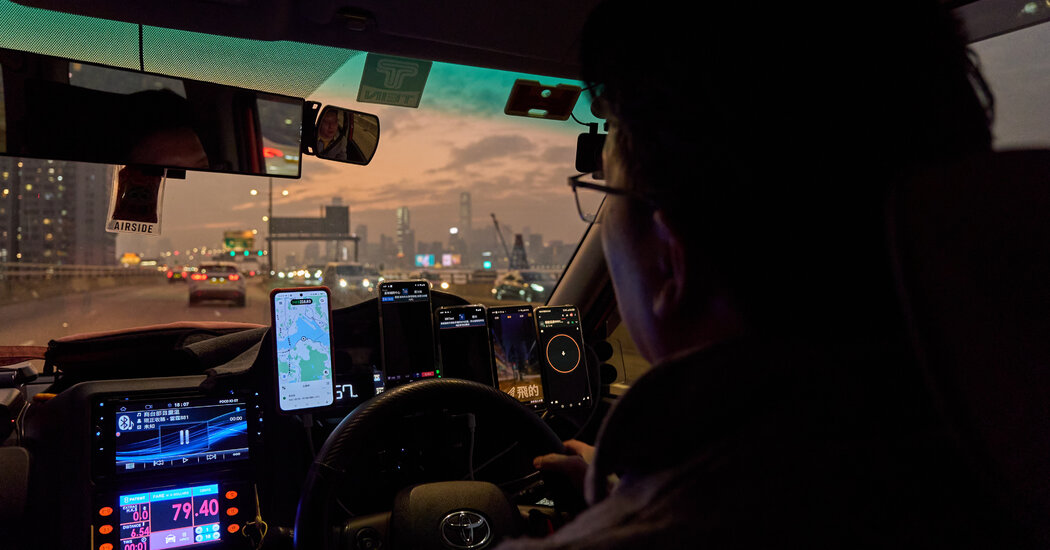The air is laced with cigarette smoke and Cantonese profanities as half a dozen taxi drivers hang out by their fire-engine-red cabs on a quiet corner of the gritty Prince Edward neighborhood of Hong Kong. It is the afternoon handover, when day shift drivers pass their taxis to those working the night shift. They are surrendering wads of cash to a taxi agent, a matriarchal figure who collects rent for the vehicles, manages their schedules and dispenses unsolicited advice about exercising more and quitting smoking. The drivers wave her off. There may be no harder task in this city of more than seven million than trying to change a taxi driver’s habits. Often grumpy and rushing to the next fare, cabbies in Hong Kong have been doing things their way for decades, reflecting the fast-paced, frenetic culture that has long energized the city.
But taxi drivers are under pressure to get with the times. Their passengers are fed up with being driven recklessly, treated curtly and, in many cases, having to settle fares with cash — one of the strangest idiosyncrasies about life in Hong Kong. The practice is so ingrained that airport staff often have to alert tourists at taxi ranks that they need to carry bills.
The government, both because of the complaints and to revitalize tourism, has tried to rein in taxi drivers. Officials ran a campaign over the summer urging drivers to be more polite. They imposed a point system in which bad behavior by drivers — such as overcharging or refusing passengers — would be tracked and could result in the loss of licenses.
In early December, the government proposed requiring all taxis to install systems to allow them to accept credit cards and digital payments by the end of 2025, and to add surveillance cameras by the end of 2026. Predictably, many taxi drivers have opposed the idea of closer supervision.
The new controls, if put in place, would signal the end of an era for an industry that has long been an anomaly in Hong Kong’s world-class transportation system. Every day, millions of people commute safely on sleek subways and air-conditioned double-decker buses that run reliably. Riding in a taxi, by comparison, can be an adventure. Step into one of Hong Kong’s signature four-door Toyota Crown Comfort cabs and you will most likely be (what is the opposite of greeted?) by a man in his 60s or older with a phalanx of cellphones mounted along his dashboard — used sometimes for GPS navigation and other times to track horse racing results.
…and so on.
Source link




